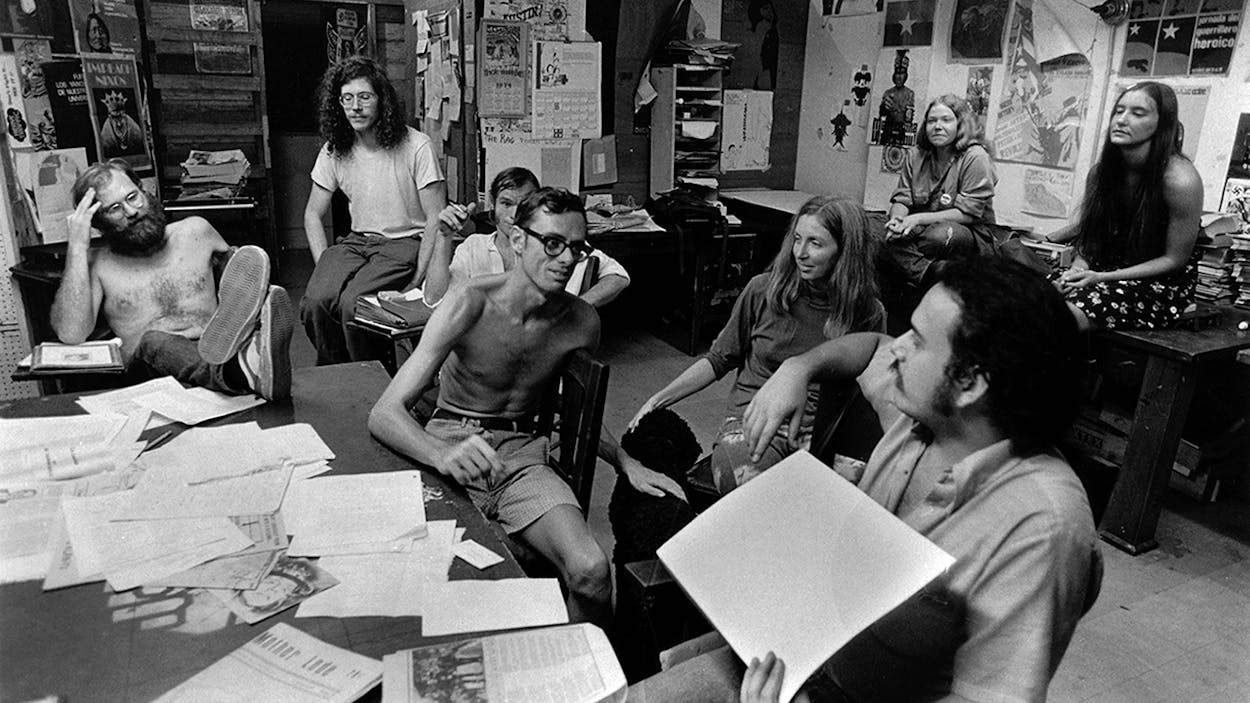To most people, the story of Austin’s progressive streak begins in the early seventies, when the Armadillo World Headquarters opened, Willie Nelson moved to Austin from Nashville, and people started getting high on cosmic country. But Austin’s roots in weirdness extend even deeper into the caliche soil, to at least 1966, when a handful of members of the Students for a Democratic Society (SDS) at the University of Texas founded the underground newspaper the Rag. The paper took aim at UT’s administration, which was threatening drastic tuition hikes, among other ostensibly draconian measures. It also covered civil rights, the Vietnam War, women’s liberation, the Chicano movement, and unions like the United Farm Workers. In its eleven years of publication, the Rag would evolve into a national voice, playing a role in at least one major Supreme Court case and, as one of the first underground papers, becoming a template for the alternative newsweeklies that would follow, in effect influencing the business of journalism.
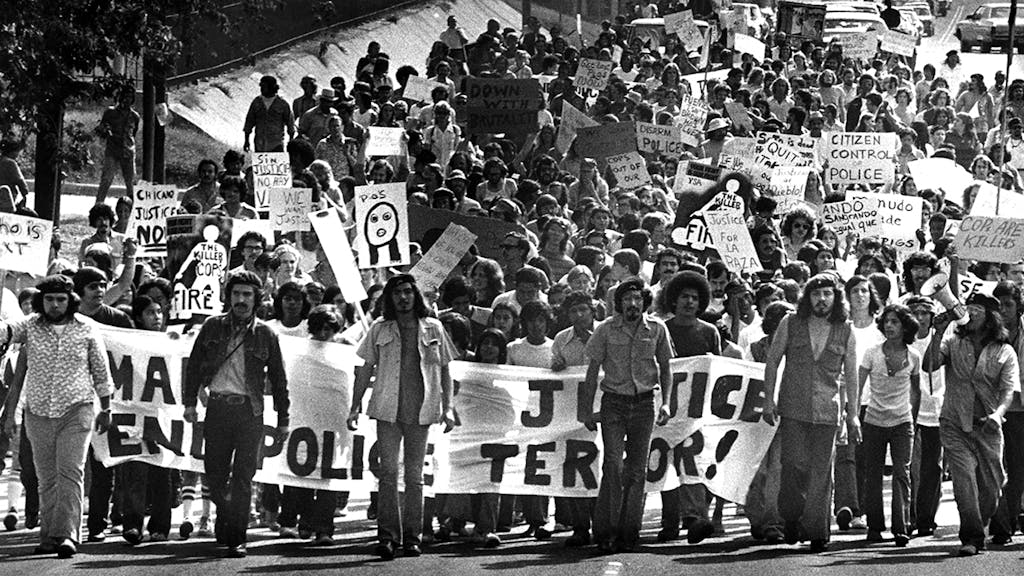
“The Rag helped pull together the New Left community and the counterculture community and really turned them into, at that point, a pretty significant political force in Austin that ended up basically transforming the University of Texas in ’67, ’68,” said Thorne Dreyer, the Rag co-founder and original “funnel,” or editor. “It created a true activist community. The people who worked on the Rag were involved in organizing demonstrations, went to demonstrations, wrote about demonstrations.”
Someone once said that if you remember the sixties, then you weren’t really there. Let’s hope that’s not the case when former staffers and others hip to their scene convene this weekend at various locations around Austin for “The Rag Reunion and Public Celebration,” commemorating the paper’s fiftieth anniversary. An organizing committee of Rag staffers including Dreyer, Alice Embree, Bill Gordon, Glenn Scott, Hunter Ellinger, Phil Prim, Terry DuBose, and Pat Cuney are starting it off at the Vortex with a “Gentle Thursday.” This throwback form of peaceful demonstration, with balloons, kazoos, and spoken word, was practiced on the UT campus by the Rag in conjunction with the SDS until the school administration perceived the protest as a threat and banned it on campus.
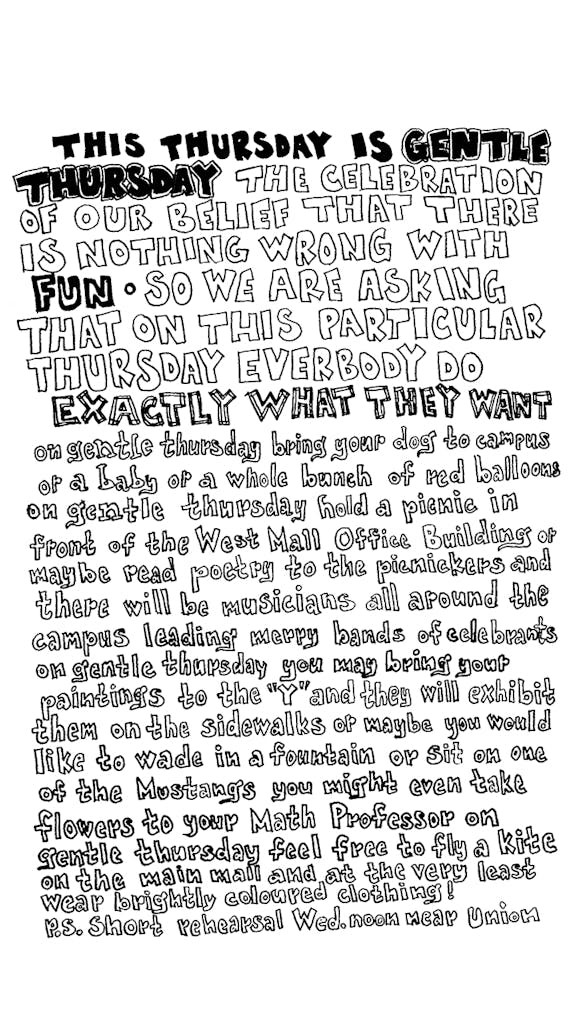
This Friday and Saturday, there will be a series of panel discussions at Austin Community College-Eastview Campus. As part of that event, there will be a screening of the documentary film The Rag: Underground Newspaper 1966–1977, which will pair nicely with the recently published anthology Celebrating the Rag: Austin’s Iconic Underground Newspaper, featuring more than one hundred articles and an abundance of wonderful art. On Saturday night, at Threadgill’s, there will be a concert with a number of old-school acts, including Uranium Savages, Extreme Heat, and the Freddie Steady Krc Revue with Spencer Perskin of Shiva’s Headband, one of Austin’s first big psychedelic rock bands and the Rag’s former house band. And until the end of the month, there will be an exhibit at La Peña of work by Alan Pogue, a staff photographer at the Rag, who picked up his trade while serving in Vietnam, first as a chaplain and then as a medic.
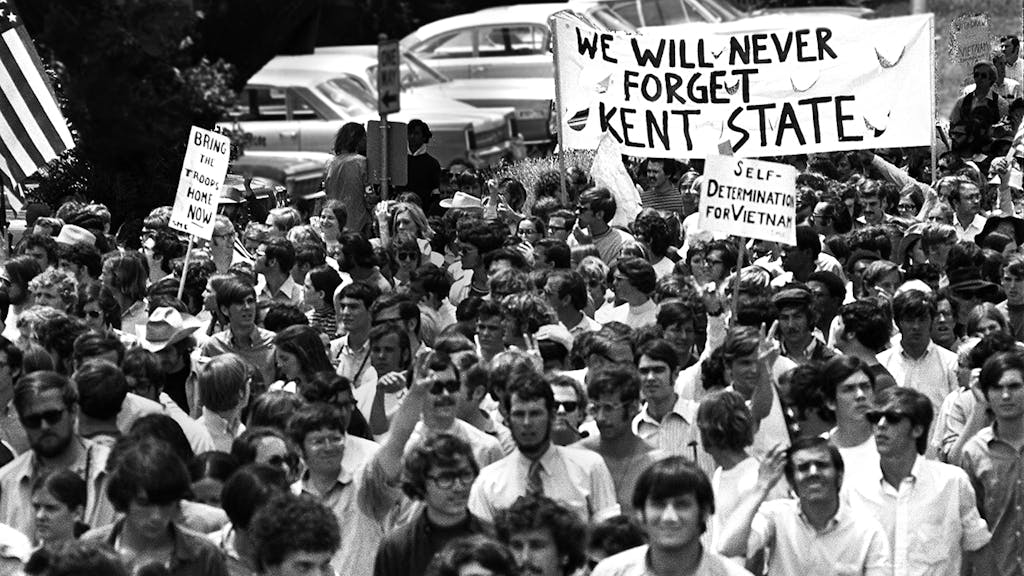
The Rag was founded two months after the deadly shooting at the UT Tower. John Economidy, a right-wing ROTC student, had succeeded Kaye Northcott as editor of the Daily Texan, the student newspaper whose editors were, according to Dreyer, typically “liberal crusaders.” Dreyer, who arrived at UT after studying acting in New York, along with the likes of Embree, Carol Neiman (the “funnella”), Jeff Shero (later Jeff Nightbyrd), Mariann Vizard, and Thorne’s high school friends from Houston, Dennis and Judy Fitzgerald, saw an opportunity. They would fill the void left by the Daily Texan’s coverage. The Rag would become the sixth paper in the Underground Press Syndicate, a DIY network of publications born out of societal ills. Starting with two papers in California, two in Michigan, and one in New York, the syndicate proliferated into hundreds of papers in the U.S., Canada, and Europe. The high quality and low cost of offset presses helped make this possible.
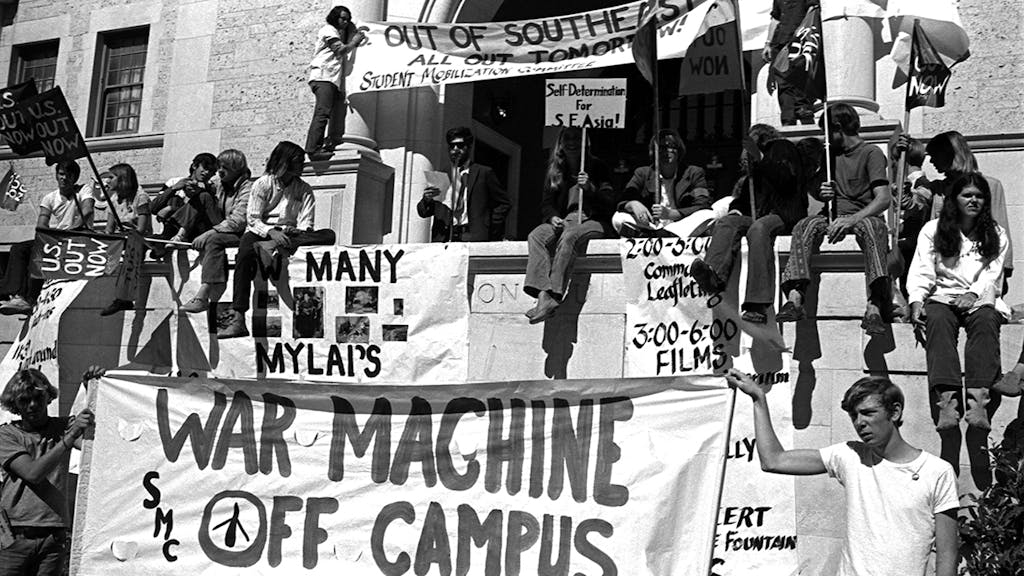
“In the very beginning, we didn’t know what we were doing,” said Dreyer, who was principally involved with the paper only in the first couple of years. “Nobody had ever done this before. So it was an experiment. We didn’t know how to lay it out. It was all trial and error. It was always a little raggedy, and it opted for irony over elegance in its name. There was the sex, drugs, and rock and roll, but there was a lot of stuff about Vietnam, there was a lot of political analysis, and there was power structure research about the University of Texas.”
The Rag, a mostly weekly paper, borrowed as easily from Paul Krassner’s The Realist as it did Mad magazine in its expression of angst over bureaucracy and apathy. The first issue was published in comic-book form on October 10, 1966. It included a story by Northcott, who later edited the Texas Observer with Molly Ivins, from 1970 to 1976, entitled “Gen. John Economidy: The First 100 Days.” There was also a critique of Playboy magazine and the objectification of women by Jeff Shero, who, in 1974, went on to found Austin Sun, similar in style to the Rag but bent more toward music and culture, the staffers of which went on to form the nucleus of the Austin Chronicle and L.A. Weekly, in Los Angeles. There was also a theater review of “Who’s Afraid of Virginia Woolf?” and a motorcycle column called “Bent Spokesman.”

The Rag would become the canvas for some of the best illustrators of the era. Jim Franklin, the house poster artist for the Vulcan Gas Company, a performance space he helped manage, plastered it with his trippy armadillos, and Gilbert Shelton’s dope-riddled comic strip “The Fabulous Furry Freak Brothers” debuted there. The Rag also featured the work of Kerry Awn, Michael Priest, and Danny Garrett, who were poster artists at the Armadillo World Headquarters, and Trudy Minkoff, who did a number of on-the-spot topical drawings. In the seventies, the Rag also made a name for itself with its involvement in the women’s movement. Rag staffers Judy Smith, Bea Durden, and Barbara Hines, among others, ran an abortion referral service on the side and were instrumental in helping attorney Sarah Weddington craft the pivotal case Roe v. Wade.

In 1977 the Rag’s run of forsaking objectivity in favor of brutal honesty, all in the pursuit of participatory democracy, came to an end. The revolutionary spirit of the sixties had died and with it the desire to keep putting out a paper that was already a weekly marvel of overexertion and financial feasibility. But the Rag lives on as the Rag Blog and Rag Radio, both largely overseen by Dreyer.
“Making money was never, ever even a thought,” Dreyer said. “It was always just for the fun of it—and for changing the world. In fact, later on the motto of the Rag became ‘Brought to you by the miracle of functioning anarchy.’”
Various locations, October 13–16, theragblog.com/category/ragreunion/
Other Events Across Texas
AUSTIN
Farm Aid
Farm-to-table food is so ubiquitous these days that it’s easy to take it for granted. But the farms that supply the fresh fruits, vegetables, eggs, and meats for local cuisine can always use support. An entertaining way to champion your community farmers is by attending the Springdale Harvest Fest, a family-friendly fundraiser with food, drink, and lawn games—plus an opportunity to mingle with James Beard Award–winning chef and brisket master Aaron Franklin.
Springdale Farms, October 16, 1 p.m., springdalefarmaustin.com
DALLAS
Acting Up
Whether it’s his role as Walter White, the everyman meth dealer from the TV show Breaking Bad, or as LBJ, whom he played in the movie All the Way, Bryan Cranston is considered one of the finest actors of his generation. During a Wednesday luncheon at SMU, he will discuss his newly released memoir, A Life in Parts, and perhaps reveal the secret to his success.
SMU, October 19, 1 p.m., libcal.smu.edu/event/2848110
DENTON
Horse Play
The Denton area is home to a number of thoroughbred racehorses, but on Friday, a different kind of horsepower will be on display. At the Denton Independent Motorcycle Show, a free two-day festival with a pop-up art show, check out an array of custom-made rides built with salvaged parts and a lot of elbow grease.
Patterson-Appleton Arts Center, October 14–15, dentonmotorcycleshow.com
FORT WORTH
Street Cred
Brian Donnelly, a.k.a. KAWS, is a prime example of a person rising up from the streets—metaphorically, that is—to make something of oneself. From his roots as a New York City tagger, he has become an internationally celebrated artist whose paintings, sculpture, and toys inspired by cartoon characters from Mickey Mouse to Bart Simpson will be featured in the exhibit “Where the End Starts.”
Modern Art Museum of Fort Worth, October 20 to January 22, themodern.org
SAN ANTONIO
Pas de Quixote
Cervantes’ masterpiece, Don Quixote, about a chivalrous knight and his sidekick, Sancho Panza, is both a tragedy and a comedy. The eminent critic Harold Bloom referred to it as a work of radical nihilism and anarchism. That should keep the dancers in Ballet San Antonio busy as they stage a titular performance of the classic work.
Tobin Center for the Performing Arts, October 14–16, balletsanantonio.org
- More About:
- Austin
